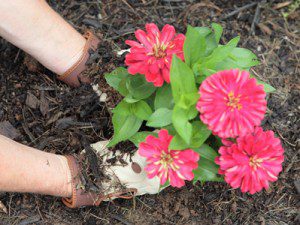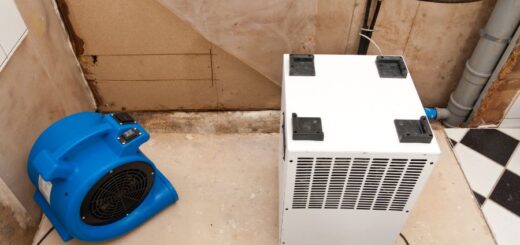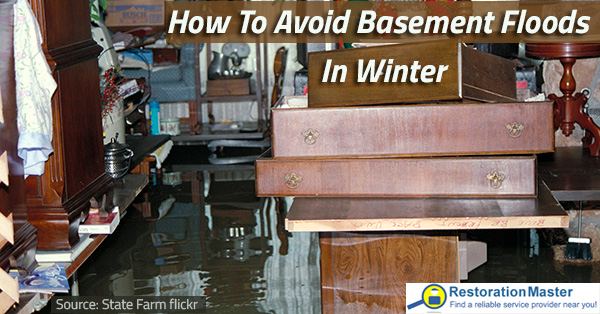How to Restore a Flooded Backyard
Backyard flooding needs to occur only once, and homeowners are quick to make efforts to restore it. A flooded yard leads to a host of nuisances, like disease-carrying mosquitos, moldMold is a type of fungus that grows in damp or humid conditi... More colonies and slushy mud. Homeowners who face a flooded backyard can restore it by choosing among several tacticsTactics are the specific methods or actions used to achieve ... More.
1. Pinpoint the flood source
Stopping the flow of water into the backyard is the first step homeowners must take in order to resolve the floodingFlooding is the overflow or accumulation of water in areas t... More scenario. Check the roof to see if gutters and downspouts are blocked. Clogged gutters should be maintained by cleaning them twice a year, in spring and in fall.
If the downspout is too short, attach an extension at least three feet in length. The downspout extension will direct water away from the home’s foundation. Also examine the sump pumpA sump pump is a pump installed in a basement or crawlspace ... More to ensure it leads the excess water to another part of the yard, which helps prevent future backyard floodingFlooding is the overflow or accumulation of water in areas t... More.
2. Regrade the yard
A flood resistant landscape technique is to regrade the lawn. A backyard that slopes downward and toward the home will inevitably leadLead is a heavy metal that can be toxic to humans, especiall... More to floodingFlooding is the overflow or accumulation of water in areas t... More every time heavy rains fall or snow melts. Ideally, the yard should slope away from the property in every direction.
Regrading the backyard can be either a DIY weekend job or a professional one. When working with experts, homeowners ensure that the pipes, drains, and vents buried in the ground are not punctured or otherwise destroyed during the grading process.
Homeowners who prefer to tackle the regrading themselves should first mark all utility lines, including water, gas and electric. Obtain a digging permit if one is necessary. Identify where the runoffRunoff is water from rain or other sources that flows over s... More should leadLead is a heavy metal that can be toxic to humans, especiall... More, whether to the edge of the yard or toward a public drain.
Dig approximately eight inches around the foundation and set aside the soil for later use. Arrange the freshly dug soil around the lawn to form a downward slope. Effective drainage requires a two percent grade at minimum. Smooth the grade with a rake and plant grass.
3. Add mulch
Spreading mulch in the backyard garden helps to prevent waterflow toward the property. Take precautions when adding mulch near the home’s siding, since moisture wicking can cause rotting to the exterior of the home. Lay mulch six inches from the siding.
4. Plant new grass
Grass roots help absorb moisture. The impact of floods is significantly reduced with the planting of new grass. Be careful to avoid cutting the grass too short; doing so weakens the grass root structures, resulting in the possible floodingFlooding is the overflow or accumulation of water in areas t... More of the lawn and home.
Certain grasses are most effective in specific areas. In Nebraska, tall fescue is an optimal grass due to its versatility and ability to thrive in a range of environments. Buffalo grass is ideal for lawns of 15 inches or less rainfall annually. Kentucky bluegrass is another option for Nebraska yards.
5. Install a rain barrel
Large, heavy-duty barrels that collect rainwater from under the exterior downspouts are known as rain barrels. The advantages of installing a rain barrel include capturing and redirecting water away from the home’s foundation and, thereby, protecting the property from floodingFlooding is the overflow or accumulation of water in areas t... More.
A bonus is that the collected water inside rain barrels can be used to water the gardens and yard. Position the barrel near the backyard for easy access. Also ensure that the ground upon which the barrel rests is level; a heavy, 55-gallon barrel can tip over once it is full.
6. Plant a rain garden
Drainage spots in the yard are the perfect location for rain gardens. A rain garden is a type of garden where stormwater runoffRunoff is water from rain or other sources that flows over s... More from the roof collects. The water accumulates in the shallow depression inside the yard, where a variety of grasses and wildflowers grow.
Plant the rain garden ten feet away from the property and in a low spot. Dig six inches deep to allow stormwater to absorb within a one- to seven-day period. Direct the downspout toward the depression. The specially selected native plants will absorb and filter the stormwater.
Native plants are best suited for rain gardens because they don’t require fertilizer and have strong root systems. Examples of ideal plants are shrubs, perennials, and wildflowers. Do not plant moisture-sucking trees or invasive plant species, like purple loosestrife.
7. Plant local floras

Homeowners who are green thumbs can also plant indigenous vegetation to help prevent soil erosion. Plants native to the area are the most optimum choices. The dual benefit of planting local plant life is that rainwater drains more efficiently, thereby reducing the chances of floodingFlooding is the overflow or accumulation of water in areas t... More.
8. Dig for flood control
Manual digging can help control floodingFlooding is the overflow or accumulation of water in areas t... More in the backyard. As mentioned, some towns require a digging permit; so, consult the local planning office prior to beginning work. Various project options include digging a dry well, a drainage trench or a French drain.
The above options can help prevent a flooded backyard. Some solutions are maintenance-free once set up, like a French drain, while others require regular attention, like a rain garden. Homeowners who are handy with tools can easily accomplish any of the above solutions to backyard floodingFlooding is the overflow or accumulation of water in areas t... More.
Professional Flood Cleanup
When floodingFlooding is the overflow or accumulation of water in areas t... More is extensive, call in an experienced flood cleanup company for assistance. Their advanced flood restoration process starts with a careful inspectionInspection is the careful examination and assessment of a pr... More of affected areas. Upon providing a recommendation, trained crews begin the restorationRestoration is the process of returning a property to its pr... More work immediately. They use cutting edge technology, like powerful dehumidifiers and air movers, to extract moisture and thoroughly dry the property.












